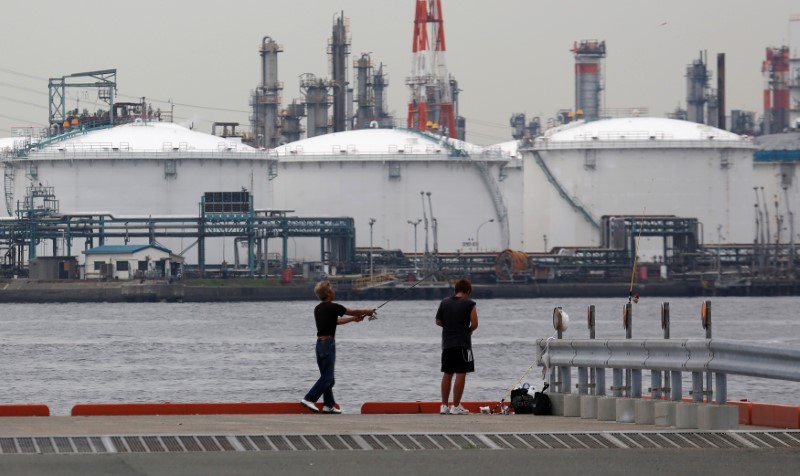By Alex Lawler
LONDON (Reuters) - Oil edged further above $55 a barrel on Tuesday, drawing support from expectations of tighter supply once the first output cut deal between OPEC and non-OPEC producers in 15 years takes effect on Sunday.
Jan. 1 brings the official start of the deal agreed by the Organization of Petroleum Exporting Countries and several non-OPEC producers to lower production by almost 1.8 million barrels per day (bpd).
Brent crude was up 5 cents at $55.21 a barrel by 0941 GMT. The global benchmark reached $57.89 on Dec. 12, the highest since July 2015. U.S. crude gained 20 cents to $53.22.
"OPEC's output cuts are nearing, but because there's hardly any news on producers, the market is stuck in the doldrums," said Tomomichi Akuta, senior economist at Mitsubishi UFJ Research and Consulting in Tokyo.
Trading was shut on Monday for the Christmas holiday and volume was expected to be light on Tuesday.
Major OPEC members such as Saudi Arabia and Iraq have informed customers of lower supplies. But Libya and Nigeria - which are exempt from reductions because conflict has curbed their output - have been increasing production.
Libyan output was 622,000 bpd on Monday, up slightly from levels recorded before an armed faction agreed to lift a two-year blockade on major western pipelines on Dec. 14, the National Oil Corporation (NOC) said.

While the outright price of crude is being supported by the prospect of lower supplies, the impact in the physical market will probably differ according to the type of crude.
Price differentials for lighter crudes could weaken once the supply cut comes into force as producers are expected to trim back output of their heavier grades, analysts at JBC Energy said in a report.
"Going into 2017, we expect that the premiums for light, sweet grades may be increasingly pressured as a result of the joint OPEC and non-OPEC output cut agreement which is supposed to reduce primarily the availability of medium-sour crudes," JBC said.